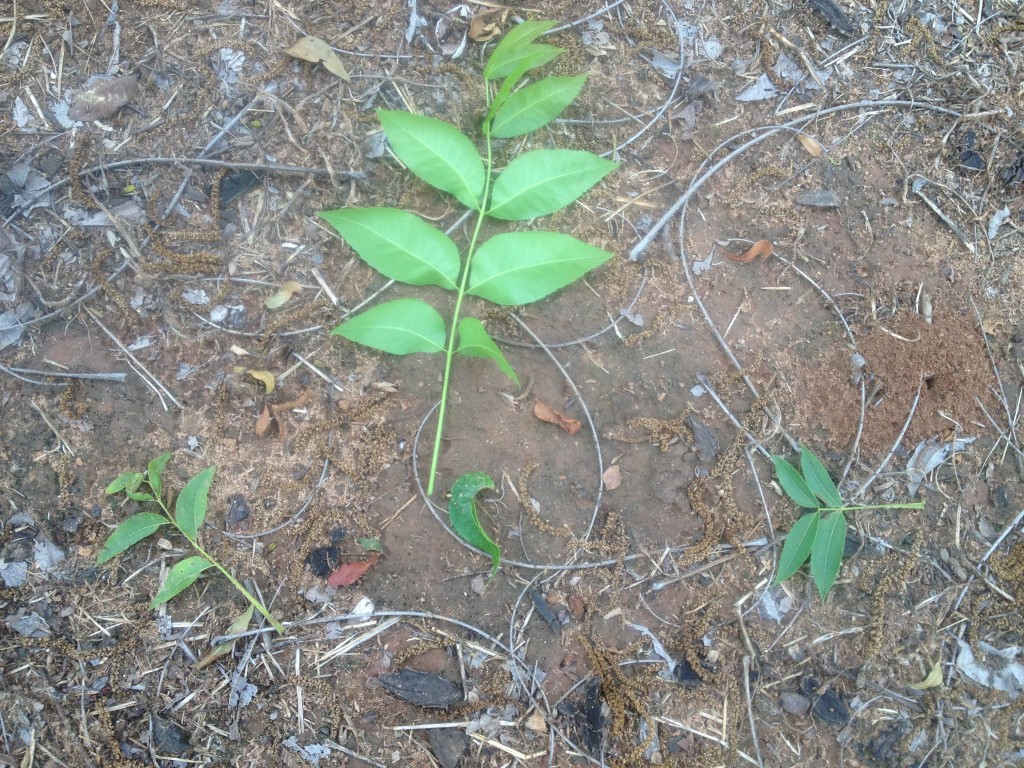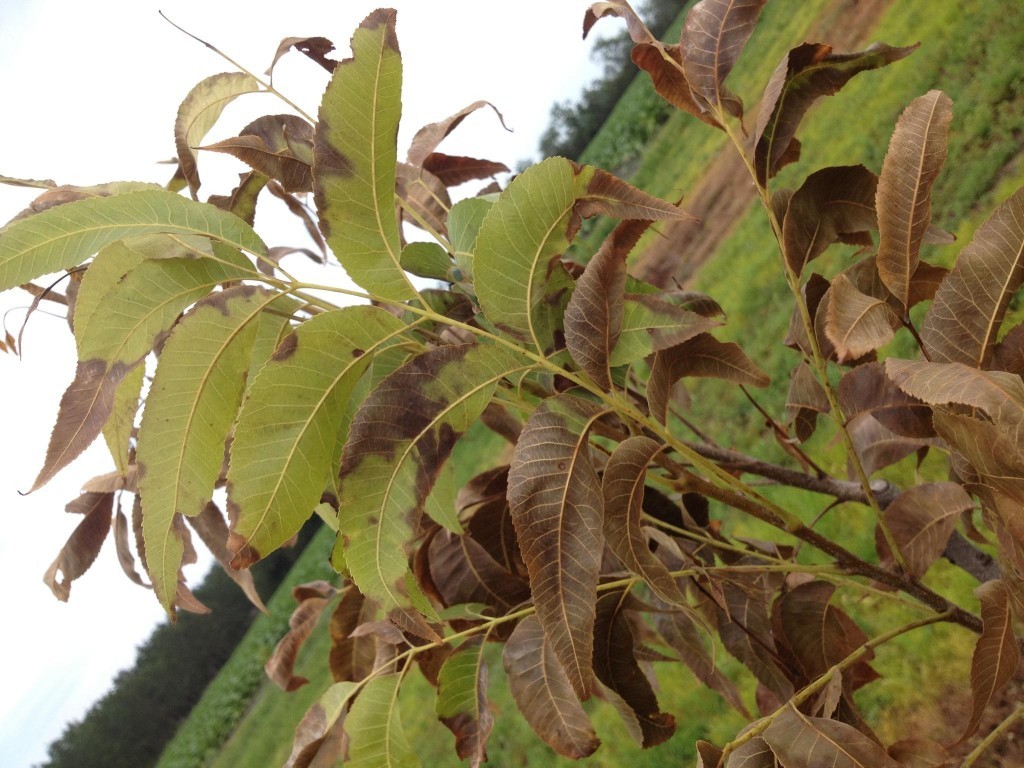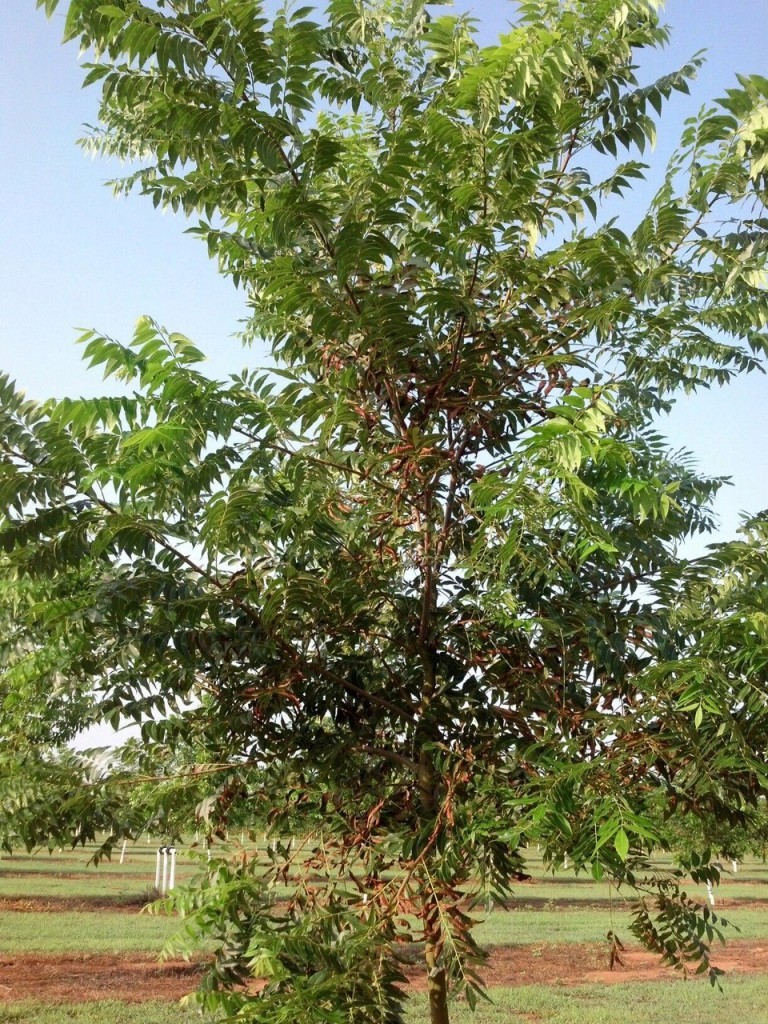
May 25, 2021Effects of hot weather on pecan trees is a topic in Southeast
Temperatures later this week are predicted to be pretty warm for this time of year. We are coming off a pretty cool spring and are diving right into summer. The trees have not had much chance so far to be conditioned for temps in the upper 90’s. This may lead to a few issues you may see popping up in the next few weeks.
The most obvious effect of the hot weather will likely be seen on young trees, especially those planted in the past winter. Young trees, particularly first year trees, often do not have enough root system established to support a lot of new growth once the hot weather hits. There hasn’t been a lot of water demand and its been an easy growing season for the trees so far this year with the cooler temperatures but that will change quickly as we get into the high 90s. Hot, dry conditions can stress trees in 2 ways: 1) the increased water demand, which will require them to have adequate soil moisture to meet that demand. 2) when soil temps get above 95 degrees F, the feeder roots in the shallow soil depths can be killed, which puts increased pressure on the already stressed root system that is trying to establish itself. The result of these ill effects is usually observed in leaf scorching of young trees as seen in the images below:


Be sure to keep the soil around pecan trees consistently moist. Trees 3 years and under require 100 gallons per week with microsprinklers and 50 gallons per week with drip. On sandy soils during excessively hot conditions you may need as much as 140 gallons per week with microsprinkler and 75 gallons per week with drip. Irrigation not only provides adequate soil moisture but also keeps soil temperatures cooler so shallow feeder roots are not killed.
Mature trees can also be stressed by hot temperatures. This is normally expressed in the dropping of compound leaves. You may notice leaves coming off the tree when spraying during this time. Drop from hot conditions usually occurs when you get a rain or irrigation following hot, dry weather.
Leaf drop or abscission is controlled by a plant hormone called auxin. Auxin is formed in the leaves and transported to other areas of the plant for various processes. As long as the flow continues, the cells that will eventually form the abscission layer remain active and the leaf remains firmly attached to the tree. As the leaf begins to shut down, auxin production dwindles and the water and sugar conducting tubes in the vessels stop working. A reduction in the flow of auxin can be caused by a number of things-including drought stress. This reduction tells the cells that it is time to begin to form the abscission layer. As the stress becomes more serious you may also see some associated nut drop.
Mature trees should be at 30-36% capacity right now, which translates to around 1000-1400 gallons per acre per day on loamy sand. Clay soils can probably go with less (20-25%) and deep sands need to be at the upper end of the range (36%).
Photo at top: Leaf drop from hot, dry weather.







